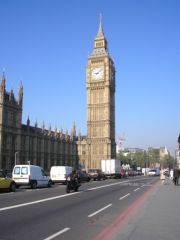| Test result | 2006-07 | 2007-08 | 2008-09 | 2009-10 | 2010-11 |
|
Pass |
2,838 |
2,863 |
3,068 |
3,150 |
3,178 |
|
Fail |
648 |
553 |
542 |
455 |
455 |
|
PRS |
477 |
455 |
390 |
360 |
300 |
|
Prohibitions |
11 |
21 |
19 |
16 |
15 |
|
Total tests |
3,974 |
3,892 |
4,019 |
3,981 |
3,948 |
| 2008 | 2009 | 2010 | |
|
Not displaying lights at night or in poor visibility |
52 |
45 |
36 |
|
Dazzling headlights |
35 |
35 |
26 |
| (1 )Includes only accidents where a police officer attended the scene and in which a contributory factor was reported. | |||
| Tests undertaken | Fails | |
|
(i) Great Britain |
||
|
Motorcycles |
964,600 |
123,752 |
|
Classes 3 and 4: Cars , vans and passenger vehicles with up to 12 seats |
26,421,628 |
8,037,505 |
|
Private passenger vehicles with more than 12 seats |
49,045 |
13,539 |
|
Goods vehicles between 3,000 and non-testable vehicles include mobile cranes, diggers and non-HGV trailers. Excludes emissions-only checks. |
589,261 |
239,613 |
|
(ii) England |
||
|
Motorcycles |
862,117 |
110,254 |
|
Classes 3 and 4: Cars , vans and passenger vehicles with up to 12 seats |
22,881,777 |
6,803,314 |
|
Private passenger vehicles with more than 12 seats |
41,393 |
11,332 |
|
Goods vehicles between 3,000 and non-testable vehicles include mobile cranes, diggers and non-HGV trailers. Excludes emissions-only checks. |
511,400 |
205,005 |
|
(iii) Yorkshire and the Humber |
||
|
Motorcycles |
83,841 |
9,787 |
|
Classes 3 and 4: Cars , vans and passenger vehicles with up to 12 seats |
2,155,793 |
712,357 |
|
Private passenger vehicles with more than 12 seats |
5,037 |
2,519 |
|
Goods vehicles between 3,000 and non-testable vehicles include mobile cranes, diggers and non-HGV trailers. Excludes emissions-only checks. |
52,114 |
23,867 |
|
(iv) City of York UA |
||
|
Motorcycles |
5,103 |
515 |
|
Classes 3 and 4: Cars , vans and passenger vehicles with up to 12 seats |
80,269 |
24,479 |
|
Private passenger vehicles with more than 12 seats |
98 |
41 |
|
Goods vehicles between 3,000 and non-testable vehicles include mobile cranes, diggers and non-HGV trailers. Excludes emissions-only checks. |
1,641 |
620 |
MOT test results for Northern Ireland are not held by the Department.
MOT data are available in raw format from:
www.data.gov.uk

